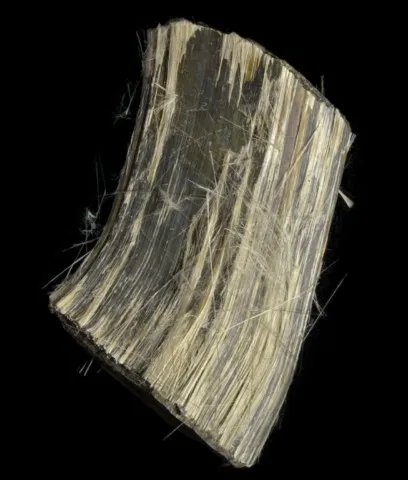GRUNERITE
Class : Silicates
Subclass : Inosilicates
Crystal system : Monoclinic
Chemistry : Fe7Si8O22(OH)2
Rarity : Quite common
Grunerite belongs to the group of monoclinic amphiboles and forms a series with magnesiocummingtonite (magnesian), cummingtonite being the intermediate term. It is an amphibole that is mainly found in banded iron formations (BIFs) as well as in iron-rich rocks having undergone contact metamorphism. It was named in honor of the French chemist Louis Emmanuel Gruner who made the first analysis. Grunerite is iron-bearing and occurs in fibrous to acicular crystals, often united in fibroradiated aggregates. Its color is dark green, gray to greenish gray, sometimes brown.
Main photo : Fibrous grunerite (amosite) from Penge Mine, Limpopo, South Africa © Bruce Cairncross
Grunerite in the World

Twinning
Multiple twins over {100} are known.
Fakes and treatments
No fakes recorded for this mineral species.
Hardness : 5 to 6
Density : 3.4 to 3.6
Fracture : Fibrous
Streak : White
TP : Translucent
RI : 1.663 to 1.729
Birefringence : 0.033 to 0.043
Optical character : Biaxial -
Pleochroism : Visible
Fluorescence : None
Solubility : Insoluble
Magnetism : NoneRadioactivity : None

